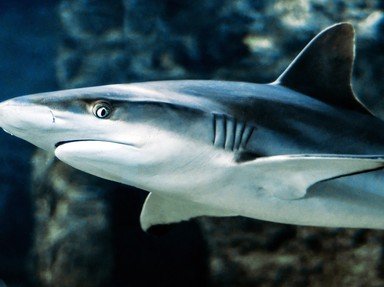Quiz Answer Key and Fun Facts
1. Shark teeth are commonly found as fossils or in sandbanks due to them being made of dentin. However, shark skeletons are rarely discovered, as they are made primarily of what material?
2. Most sharks have eight total fins, though that number depends on the species. Which of these is NOT a type of shark fin?
3. While bony fish utilize gas-filled swim bladders to stay buoyant in the water, sharks must employ other methods. One is the production of the lighter-than-water oil known as squalene, produced in which organ?
4. Some species of shark can be put into a state of immobility by stroking their snouts.
5. Basking sharks, whale sharks, and megamouth sharks get the majority of their nutrition from which of these sources?
6. Along with blood, predator sharks are attracted to the smell of decomposing flesh.
7. A shark researcher would be quite familiar with the objects in this image. What are they?
8. Sharks, like other fish, have gills that are vital to their respiratory systems. Some sharks, such as the nurse shark, have spiracles behind their eyes that also aid in taking in water for respiration. Which kinds of sharks are most likely to have spiracles?
9. Some sharks, such as tiger sharks, are capable of a process in which they push their stomach out through to their mouth, expel indigestible elements, then retract it to its original position. What is this process known as?
10. Hammerhead sharks have a unique head shape that is believed to assist in sensory reception. What is this head shape sometimes referred to as in zoology?
Source: Author
trident
This quiz was reviewed by FunTrivia editor
rossian before going online.
Any errors found in FunTrivia content are routinely corrected through our feedback system.
